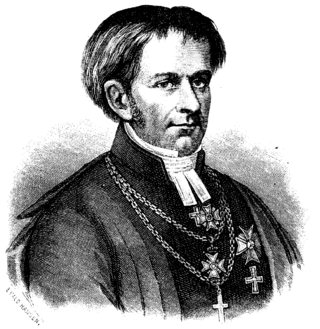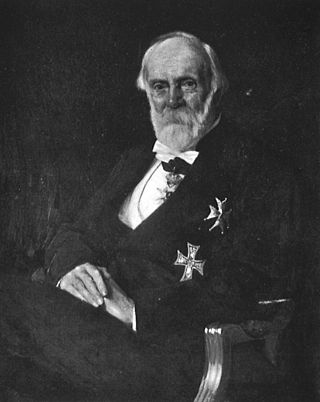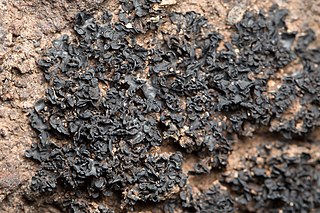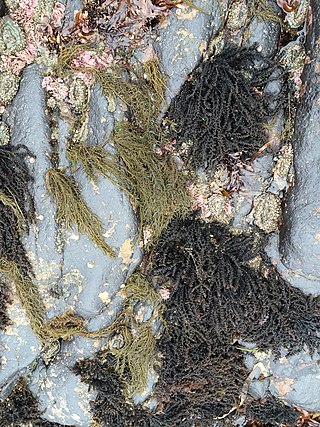
Genus is a taxonomic rank used in the biological classification of living and fossil organisms as well as viruses. In the hierarchy of biological classification, genus comes above species and below family. In binomial nomenclature, the genus name forms the first part of the binomial species name for each species within the genus.

Carl Adolph Agardh was a Swedish botanist specializing in algae, who was eventually appointed bishop of Karlstad.

Jacob Georg Agardh was a Swedish botanist, phycologist, and taxonomist.

Alexander Carl Heinrich Braun was a German botanist from Regensburg, Bavaria. His research centered on the morphology of plants.

Jacques Philippe Raymond Draparnaud was a French naturalist, malacologist and botanist. He is considered the father of malacology in France. He was professor of medicine and pathology at the Faculté de Médecine de Montpellier.

The Lichinaceae are a family of ascomycete fungi. Most species are lichenized with cyanobacteria, and have a distribution largely in temperate regions.

Glottiphyllum longum is a species of succulent plant in the family Aizoaceae, native to the Western Cape and Eastern Cape Provinces, South Africa.

Gamet is a traditional dried edible seaweed from Ilocos Norte and Cagayan of the Philippines, particularly from the town of Burgos. Gamet are dried into sheets or thin cakes called pedazo, which are characteristically purplish-black in color. It is used widely in soups, salads, omelets and other dishes, in the cuisines of the northern Philippines.

Neorhodomela larix, commonly known as black pine, is a species of red algae native to coastal areas of the North Pacific, from Mexico to the Bering Sea to Japan. It forms dense mats on semi-exposed rocks in intertidal areas. The thallus is dark brown to black in color with whorled branches resembling a bottlebrush.
Maribacter is a genus in the phylum Bacteroidota.
Martensia elegans is a red alga species in the genus Martensia. It is a common South African south coast species, extending into KwaZulu-Natal at least as far as Sodwana Bay.

Wrangeliaceae is a red alga family in the order Ceramiales. It was published by J.Agardh in 1851 in his book Species, genera et ordines algarum : seu descriptiones succinctae specierum.

Friedrich Traugott Kützing was a German pharmacist, botanist and phycologist.
Acrocoelus is a genus of alveolates.

Jania rubens, the slender-beaded coral weed, is a species of red seaweeds. It is found in European waters.

Ptilonia(Harvey) J. Agardh, 1863 is a genus of red algae in the family Bonnemaisoniaceae.
Kaistia algarum is a Gram-negative, strictly aerobic and non-motile bacterium from the genus of Kaistia which has been isolated from the alga Paulinella chromatophora.
Geophilus gracilis is a species of soil centipede in the family Geophilidae found most commonly in Britain and Ireland, though specimens have also been recorded in Chile, France, Greece, and Algeria. It lives under mud and stones along the coast near or below the high tide mark, grows up to 30 millimeters in length, and is bright yellow in color with a darker reddish head. Males of this species have 51 to 57 pairs of legs; females have 51 to 61 leg pairs. This species is often confused with G. flavus and, in coastal locations, G. osquidatum.
Geophilus algarum is a species of centipede in the family Geophilidae found in the littoral zone on the French Atlantic and Channel Coasts. It has one subspecies, G. algarum var. decipiens, which can be identified by lack of a dorsal coxal pore. The male of this species has 53 pairs of legs; females have 53 to 59. This species can reach 35 mm in length.
Geophilus fucorum is a halophilic species of soil centipede in the family Geophilidae found in the French Mediterranean, Corsica, Italy, and Greece. Males of this species have 49 to 53 pairs of legs; females have 51 to 55.












